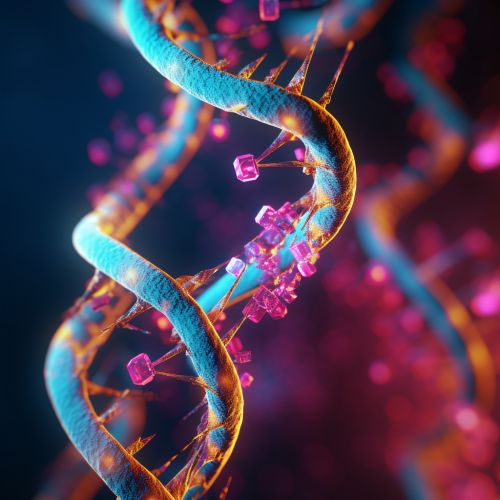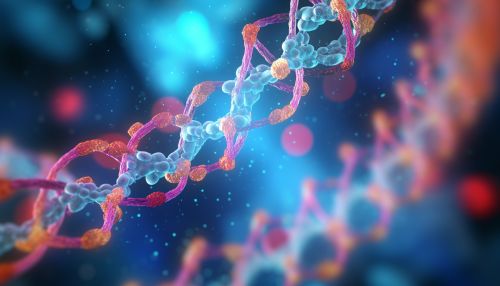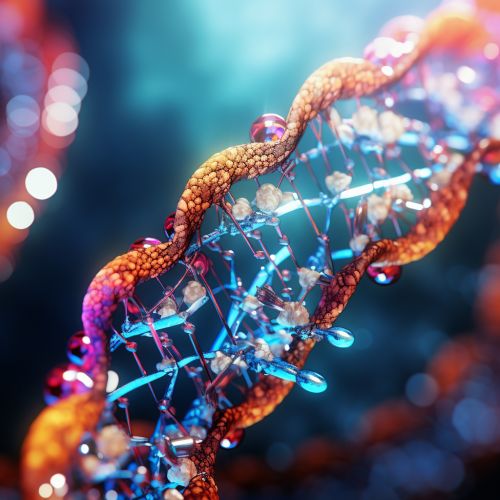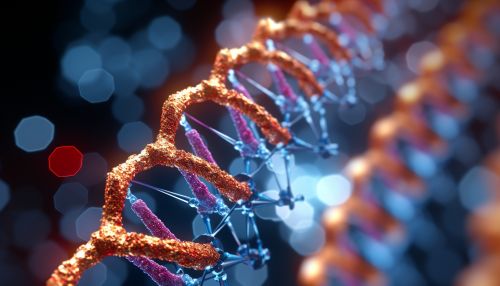The Biochemistry of DNA Repair and Mutation
Biochemistry of DNA Repair
DNA repair is a collection of processes by which a cell identifies and corrects damage to the DNA molecules that encode its genome. In human cells, both normal metabolic activities and environmental factors such as radiation can cause DNA damage, resulting in as many as 1 million individual molecular lesions per cell per day. Many of these lesions cause structural damage to the DNA molecule and can alter or eliminate the cell's ability to transcribe the gene that the affected DNA encodes. Other lesions induce potentially harmful mutations in the cell's genome, which affect the survival of its daughter cells after it undergoes mitosis. As a consequence, the DNA repair process is constantly active as it responds to damage in the DNA structure.


Types of DNA Damage
DNA damage can be subdivided into two main types: endogenous damage such as attack by reactive oxygen species produced from normal metabolic byproducts (also includes replication errors) and exogenous damage caused by external agents such as ultraviolet [UV] radiation from the sun and chemical agents.
Endogenous Damage
Endogenous damage occurs when normal metabolic byproducts and cellular processes induce changes that damage the DNA structure. Reactive oxygen species (ROS) such as superoxide (O2−) and hydrogen peroxide (H2O2) are a byproduct of normal cellular metabolism. These reactive species can damage cellular components, including DNA, proteins, and lipids. In DNA, ROS can cause double-strand breaks, single-strand breaks, and modified bases (e.g., 8-oxoguanine).
Exogenous Damage
Exogenous damage is caused by external agents such as ultraviolet radiation from the sun, x-rays, and chemical mutagens. UV radiation can cause DNA to form pyrimidine dimers, a type of DNA damage in which two adjacent pyrimidine residues bond together, distorting the DNA helix and preventing normal replication. X-rays and other forms of high-energy radiation can cause double-strand breaks in DNA, a type of damage that is particularly difficult for the cell to repair. Chemical mutagens include a wide range of chemicals, many of which are found in tobacco smoke, that can cause a variety of DNA lesions such as base modifications, deletions, insertions, and interstrand crosslinks.
DNA Repair Mechanisms
Cells are equipped with a variety of repair mechanisms, each of which is specialized to deal with a particular type of DNA damage. The cell's DNA repair machinery includes direct repair, base excision repair (BER), nucleotide excision repair (NER), mismatch repair (MMR), and double-strand break repair (including homologous recombination and nonhomologous end joining).
Direct Repair
Direct repair is used to reverse damage that alters the covalent structure of the molecule without disrupting the helical structure. One example of this is the repair of alkylated bases by the protein O6-methylguanine DNA methyltransferase (MGMT).


Base Excision Repair (BER)
Base excision repair is a cellular mechanism that repairs damaged DNA throughout the cell cycle. It is primarily responsible for removing small, non-helix-distorting base lesions from the genome. The process of BER is initiated by DNA glycosylases, which recognize and remove specific damaged or inappropriate bases, forming AP sites. These are then cleaved by an AP endonuclease, followed by the addition of new nucleotides by a DNA polymerase, and nick sealing by a DNA ligase.
Nucleotide Excision Repair (NER)
Nucleotide excision repair is a DNA repair mechanism that removes lesions from DNA that distort the DNA helix, such as thymine dimers. NER is a multistep process that involves recognition of the lesion, excision of a short single-stranded DNA segment that includes the lesion, synthesis of a repair patch copying the opposite undamaged strand, and ligation of the repair patch to the original DNA.
Mismatch Repair (MMR)
Mismatch repair is a system for recognizing and repairing erroneous insertion, deletion, and mis-incorporation of bases that can arise during DNA replication and recombination, as well as repairing some forms of DNA damage. MMR is strand-specific. During replication, the newly synthesized (daughter) strand will commonly include errors.
Double-Strand Break Repair
Double-strand breaks, in which both strands in the double helix are severed, are particularly hazardous to the cell because they can lead to genome rearrangements. Two mechanisms exist to repair double-strand breaks: homologous recombination (HR) and nonhomologous end joining (NHEJ). HR is an error-free process that uses an undamaged molecule of DNA, such as the sister chromatid, as a template to repair the break. NHEJ is an error-prone process that often involves the joining of two DNA ends that are not originally linked.
DNA Repair and Mutation
DNA repair mechanisms play a crucial role in preventing changes in DNA structure that can lead to mutation. However, if the damage to cells is too severe, then DNA repair may either be incomplete or incorrect. Incomplete DNA repair can pause the replication fork, a structure that forms during DNA replication, and lead to fork collapse, which is lethal to cells. Incorrect DNA repair can lead to mutations that can lead to diseases such as cancer.
